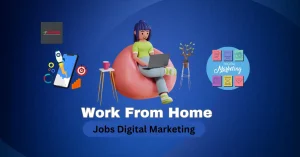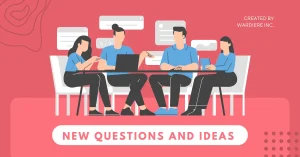In our daily life, we often learn new things by asking questions and thinking of fresh ideas. These new questions and ideas help us understand the world better and find smart solutions to problems. Whether you’re a student, a teacher, or just someone who loves to learn, asking the right questions can lead to amazing discoveries. In this article, we will explore how new questions and ideas can improve our thinking, spark creativity, and help us grow every day.
Understanding What Makes a Question “New”
Not every question is a new one. Asking “What is 2+2?” is a question, but it’s not new. A new question is one that:
- Has not been asked in the same way before
- Seeks a different point of view
- Leads to creative or deeper thinking
For example:
- Instead of asking “Why is the sky blue?”, try asking “What would happen if the sky changed color every day?”
New Questions and Ideas often begin with:
- What if…
- How can…
- Why does…
- What would happen if…
These types of questions can lead to interesting conversations, creative thoughts, and even inventions.
Where Do New Ideas Come From?
You may wonder, where do ideas come from? Do they just pop up in the brain like magic?
Actually, new ideas come from:
- Observation: Looking closely at things around you
- Problems: Trying to solve something
- Combination: Mixing two old ideas to make a new one
- Curiosity: Asking “why” or “what if”
Example:
- The idea of Velcro came from a man looking at burrs stuck to his dog’s fur.
- The idea of the airplane came from watching birds fly.
So, look around. Every object, every problem, and every question can lead to a new idea.
The Power of Curiosity
Curiosity is the desire to learn or know something. It’s what makes children ask “why?” a hundred times a day. And that’s a good thing.
Why is curiosity powerful?
- It makes you explore more
- It helps you understand deeply
- It leads to better questions and smarter answers
A curious mind never gets bored. It always finds something new to discover.
Tip: If you are curious, write your questions in a journal. You will be amazed how many ideas come just by keeping track.
Asking the Right Questions
Some questions are simple, and some open the door to big ideas. Learning how to ask the right kind of questions is important.
Two Types of Questions
- Closed-ended: “Did you eat lunch?” (Answer: Yes or No)
- Open-ended: “What did you eat, and why did you choose it?”
The second one leads to more thought and discussion.
Here’s how to ask good questions:
- Make it open-ended
- Be clear and simple
- Ask questions you truly care about
- Use “what”, “how”, or “why” to start
Example
- Bad: “Is exercise good?”
- Better: “How does exercise affect your brain and mood?”
Turning Questions into Ideas
A question is only the start. When you think deeply about your question, you begin to find answers, and those answers can turn into ideas.
Here’s a simple process:
- Write your question
- Think about the possible answers
- Choose one answer and build on it
- Draw, write, or test the idea
- See if it solves a problem or teaches something new
Many great inventions started with simple, thoughtful questions.
Testing Your New Ideas
Once you have an idea, don’t just stop there. Try it out. See if it works.
Ways to test ideas:
- Draw the idea on paper
- Build a simple model using cardboard or toys
- Talk about it with someone
- Look online to see if someone tried it before
Remember: Testing helps you learn what works and what doesn’t.
Even if your idea fails at first, you are learning something valuable.
Learning from Mistakes
Many people fear mistakes, but mistakes are your best teacher.
Famous Examples:
- Thomas Edison failed over 1,000 times before the light bulb worked.
- Walt Disney was told he lacked imagination.
Dont feel bad if your first idea doesn’t work. Most big successes are built on lessons from failure.
Key Message: Mistakes mean you’re trying.
Sharing Your Questions and Ideas
An idea gets stronger when shared.
How to share:
- With family or friends
- In school with classmates
- On a blog or YouTube video
- In a science fair or group discussion
Sharing your ideas helps you:
- Get feedback
- Make the idea better
- Inspire others
Don’t be shy. Every big idea starts small and grows when you talk about it.
Using Technology to Explore Ideas
Technology makes it easier than ever to explore new questions and ideas.
Helpful tools:
- Google Search: Learn anything in seconds
- YouTube: Watch tutorials and creative ideas
- AI Tools (like ChatGPT): Ask deeper questions and get help thinking
- Drawing Apps: Sketch your idea digitally
- Science Simulators: Try experiments safely online
Always use technology safely and under guidance if you’re young.
Growing a Mindset of “Always Learning”
The world keeps changing, and so should we.
Here’s how to keep growing:
- Ask one new question every day
- Write down three ideas each week
- Read new things regularly
- Talk with curious people
- Be open to change
The best learners never stop learning. Every day is a chance to discover something new.
Common FAQs About New Questions and Ideas
Some faqs of New Questions and Ideas:
1. What if my question sounds silly?
There are no silly questions. Even funny or strange ones can lead to smart ideas.
2. How do I know if my idea is good?
Try it. If it helps someone, solves a problem, or teaches something, it’s a good idea.
3. Can kids really create big ideas?
Yes, Many inventions and stories come from young minds. Age doesn’t limit creativity.
4. What if someone laughs at my idea?
Thats okay. Many laughed at inventors like the Wright brothers and Elon Musk too. Keep going.
5. How can I stay curious every day?
Watch, listen, ask, and write. The more questions you ask, the more ideas you’ll find.
Conclusion
Never underestimate the power of a single question or a simple idea. Great discoveries, useful inventions, and even new stories often begin with someone asking “What if…?” or “Why not…?”
Your brain is full of potential. With every new question and idea, you unlock a door to something exciting. Start today. Ask a question. Think of an idea. Share it. Test it. Improve it.









